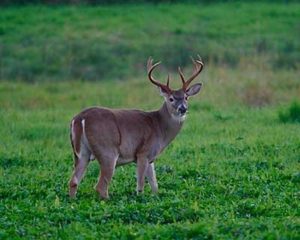 The Mission of the National Wildlife Refuge System is to administer a national network of lands and waters for the conservation, management, and where appropriate, restoration of the fish, wildlife, and plant resources and their habitats within the United States for the benefit of present and future generations of Americans.
The Mission of the National Wildlife Refuge System is to administer a national network of lands and waters for the conservation, management, and where appropriate, restoration of the fish, wildlife, and plant resources and their habitats within the United States for the benefit of present and future generations of Americans.
In 1964, a few of us might remember, there was a massive earthquake in Alaska which altered the landscape of an area where the Dusky subspecies of the Canada Goose nested. To help mitigate the impact on the Dusky (Canada) Goose population, Ridgefield, along with other Willamette Valley Refuges, was established to provide reliable and healthy wintering grounds. Each winter from November to mid-April, a group of nine volunteers identify and count geese that use the refuge for food and shelter. Counts are submitted for Canada and Cackling geese by subspecies. If the birds are collared, which some Dusky (red/orange) and Cackling minima ssp (yellow) are, then the identifying numbers are recorded. It is not always easy as the geese seem to like to present their rear end to the counter and lower their neck to hide the identifying numbers, letters and symbols from the counter. But it is a patient group, and we get our collar numbers. Our Refuge Biologist Alex uses the findings to help determine which fields the geese like best. He can then manage the plantings to best produce what the geese need. At the same time, biologists in Alaska have created raised islands in the breeding grounds to help on that end of the life cycle of the Duskys. Fortunately, the Dusky Geese have recovered from the impact of the 1964 earthquake; the population is holding its own. The Duskys are a small portion of the geese we see in winter; and, what helps the Duskys has a side benefit of helping other wintering waterfowl too.
 A little over four years ago, Fish and Wildlife took on another project to help an endangered species, the Columbia White-tailed Deer. Over a three year period, with the help of the Cowlitz Indian Tribe, over 88 deer were transferred from the Julia Butler Hansen Wildlife Refuge to Ridgefield. It was a big operation. Some of the deer decided they wanted to explore and made their way to Sauvie Island and down into the Shillapoo area. Nevertheless, they seem to be thriving here at Ridgefield. Our habitat program, with the help of many volunteer hours, has planted hundreds of trees (dogwood, Indian plum, willow, ash, cottonwood, mock orange and several other varieties) to enhance areas of the Refuge for the deer. The new trees will provide food and shelter for the deer. In winter, FWS does a helicopter fly over of the Refuge using infrared detection to count the deer population. They fly in a grid over the Refuge looking for the hot spots. This works best in winter as the leaves are off the trees and the body temperature of the deer is more easily distinguishable from the cold surroundings. This February they counted 120 Columbia White-tailed Deer. The count was limited to the Refuge and the adjoining Morgan property to the north of the Carty unit. More Columbia White-tailed are probably in the Shillapoo area south of the Refuge and over on Sauvie Island too. Our new crop of fawns has been dropping during June, so you know the number is getting higher. All in all, a success story for the deer. Although still considered endangered by the state of Washington, they were down-listed federally from endangered to threatened last year.
A little over four years ago, Fish and Wildlife took on another project to help an endangered species, the Columbia White-tailed Deer. Over a three year period, with the help of the Cowlitz Indian Tribe, over 88 deer were transferred from the Julia Butler Hansen Wildlife Refuge to Ridgefield. It was a big operation. Some of the deer decided they wanted to explore and made their way to Sauvie Island and down into the Shillapoo area. Nevertheless, they seem to be thriving here at Ridgefield. Our habitat program, with the help of many volunteer hours, has planted hundreds of trees (dogwood, Indian plum, willow, ash, cottonwood, mock orange and several other varieties) to enhance areas of the Refuge for the deer. The new trees will provide food and shelter for the deer. In winter, FWS does a helicopter fly over of the Refuge using infrared detection to count the deer population. They fly in a grid over the Refuge looking for the hot spots. This works best in winter as the leaves are off the trees and the body temperature of the deer is more easily distinguishable from the cold surroundings. This February they counted 120 Columbia White-tailed Deer. The count was limited to the Refuge and the adjoining Morgan property to the north of the Carty unit. More Columbia White-tailed are probably in the Shillapoo area south of the Refuge and over on Sauvie Island too. Our new crop of fawns has been dropping during June, so you know the number is getting higher. All in all, a success story for the deer. Although still considered endangered by the state of Washington, they were down-listed federally from endangered to threatened last year.
-Susan Setterberg, Board President & Contact Station Volunteer